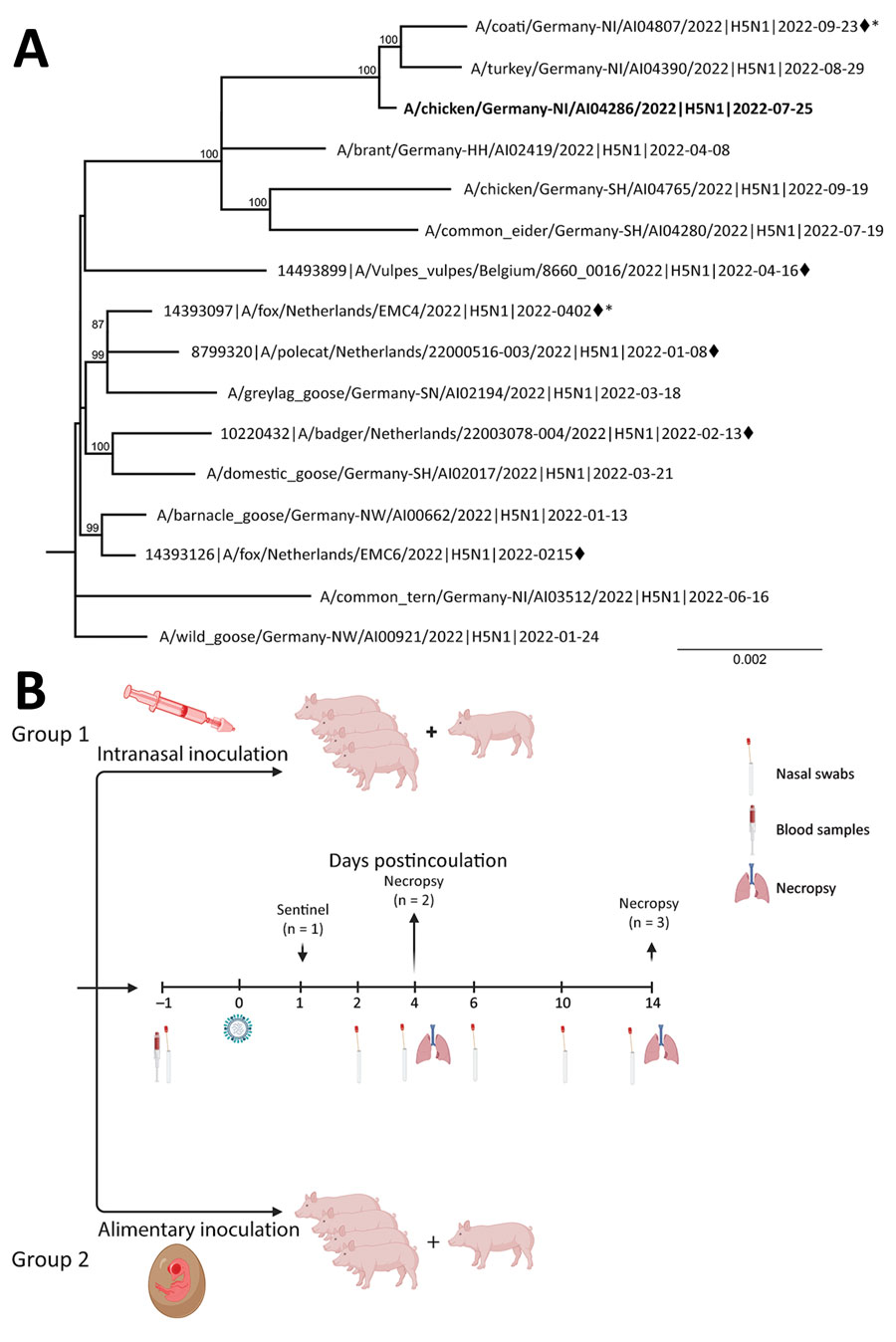Volume 29, Number 7—July 2023
Research Letter
Low Susceptibility of Pigs against Experimental Infection with HPAI Virus H5N1 Clade 2.3.4.4b
Figure

Figure. Phylogeny and experimental design for study of susceptibility of pigs against experimental infection with highly pathogenic avian influenza (HPAI) (H5N1) virus clade 2.3.4.4b. A) Maximum-likelihood phylogenetic tree (RAxML, https://cme.h-its.org/exelixis/web/software/raxml) based on 8 concatenated genome segments of selected recent HPAI H5N1 viruses from naturally infected avian hosts and from mammalian hosts (black diamonds) in Europe. Bold indicates study isolate A/chicken/Germany/AI04286/2022. Asterisks (*) indicate sequences with polymerase basic 2 E627K mutations. B) Scheme of the experimental setting of HPAI H5N1 virus infection of pigs. Four pigs, 4 months of age, were inoculated with 106 TCID50 in 2 mL using mucosal atomization devices. Four pigs were each fed with 1 HPAI H5N1 virus–infected embryonated chicken egg, carrying ≈108–109 TCID50/mL of allantoic fluid. Each pig was offered an egg, separately, in a trough and observed to complete consume it. Ten-day-old eggs were inoculated with 0.2 mL of clarified amnio-allantoic fluid of egg passage 1 and incubated for 3 days or until embryonic death was evident. Eggs were chilled until fed to pigs. Panel B created with BioRender.com and licensed by the company (agreement no. UC258UM8J3). TCID50, 50% tissue culture infectious dose.